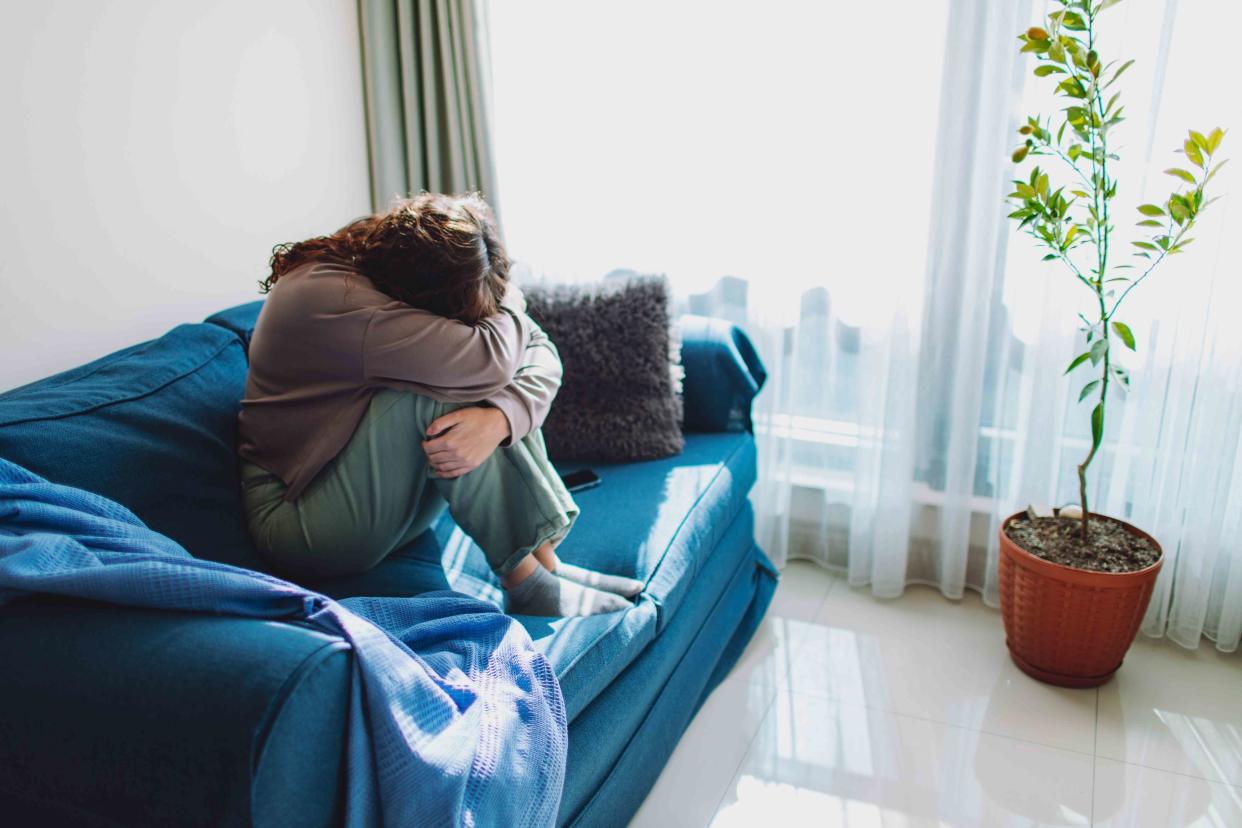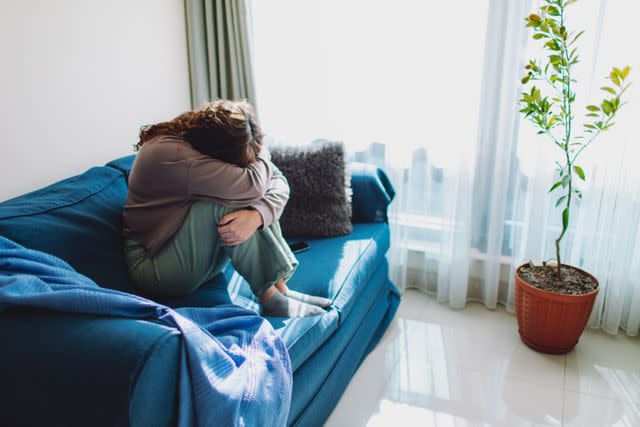Signs and Symptoms of Bipolar Disorder

JulPo / Getty Images
Bipolar disorder is a mental health condition that causes symptoms such as extreme shifts in your mood, energy levels, and ability to carry out everyday tasks. People living with bipolar disorder experience intense emotional states known as mood episodes.
There are different categories of mood episodes: manic, depressive, and mixed—each of which produce different symptoms. These episodes can last for a couple days to a few weeks. People living with bipolar disorder can also experience periods of neutral mood, meaning that neither a manic or depressive episode is occurring.
Aside from the types of episodes, there are also different types of bipolar disorder, which include bipolar I disorder, bipolar II disorder, and cyclothymic disorder. Each type of bipolar disorder includes episodes of mania or depression. However, the key differences are marked by how long the mood episodes last and the severity of them.

JulPo / Getty Images
Related:Bipolar Disorder vs. Borderline Personality Disorder: How To Tell the Difference
Common Symptoms
If you are living with bipolar disorder, you may experience intense mood swings or mood episodes. You will likely experience different symptoms, depending on the type of episode you have.
Manic Episode
A manic episode lasts for at least one week. If you are experiencing a manic episode, you may feel energized, “up,” or even irritable during most or all days. You may notice the following changes in your behavior:
Needing less sleep or feeling energetic despite getting not sleeping as much as usual
Feeling restless
Having faster speech
Racing thoughts or changing ideas when speaking
Getting distracted easily
Taking more risky behaviors like reckless driving, spending a lot of money, or desiring sex more than usual
Experiencing delusions or false beliefs
Trouble thinking properly
Seeing or hearing hallucinations
Keep in mind: these behaviors are drastically different from a person’s usual behaviors. Symptoms may become so severe that they interfere with work, social life, and daily responsibilities. In some cases of a manic episode, some people may need to receive hospital care to stay safe.
It’s important to note that some people can experience hypomania, which is a less severe version of mania. A hypomanic episode lasts about four days and does not interfere with daily functioning to the point of needing hospitalization. However, severe depressive moods can still occur after an episode of hypomania.
Depressive Episode
A depressive episode lasts for at least two weeks. During these episodes, you might feel indifferent, “down,” sad, or hopeless. You may also lose interest in your favorite activities or hobbies. Other symptoms of a depressive episode include:
Isolating yourself from others
Not having energy or experiencing fatigue
Eating too much or too little
Having a slowed speech or movement
Seeing or hearing hallucinations
Experiences thoughts about self-harm or suicide
If you are experiencing a mental health crisis, or know someone who is, call or text the National Suicide Prevention Lifeline at 988 for free and confidential support 24/7. You can also visit SpeakingOfSuicide.com/resources for a list of additional resources.
Mixed Episode
Bipolar disorder affects each person differently. While some people have alternating episodes of mania and depression, others can experience a mixed episode. During these episodes, you might experience both manic and depressive symptoms at the same time. For instance, you can feel sad and hopeless while also feeling extremely energized.
Symptoms by Type of Bipolar Disorder
There are three types of bipolar disorder: bipolar I disorder, bipolar II disorder, and cyclothymic disorder. While each type causes episodes of mania and depression, the primary difference between the type is how long you’re usually experiencing episodes.
Bipolar I Disorder
If you have bipolar I disorder, you usually experience manic episodes that last for at least seven days. You may feel high-spirited or irritable nearly every day for most of the day. In some cases, manic symptoms are so severe that a person may need medical care to keep themselves safe.
Depressive episodes are also common in bipolar I disorder, which typically follow a period of mania. These depressive episodes are severe and often last at least two weeks. In some cases, episodes of mania and depression can overlap, causing a mixed episode to occur. Bipolar I disorder is the most severe type.
Bipolar II Disorder
People with bipolar II disorder experience a pattern of depressive and hypomanic episodes. If you have bipolar disorder II, you may find that you return to your usual functioning and energy levels in between episodes.
People with bipolar II disorder do not experience full manic episodes. Instead, they experience hypomanic episodes that are less severe and disruptive as compared to the manic episodes of bipolar I disorder. For some, hypomania can even feel pleasurable, causing happiness and more energy.
However, depression experienced in bipolar II disorder can be just as severe as bipolar I depressive episodes.
Cyclothymic Disorder
Cyclothymic disorder (or, cyclothymia) is considered a milder form of bipolar disorder. Cyclothymic disorder involves recurring symptoms of hypomania and depression, leading to an unstable mood. However, these symptoms are not as severe as the other two types and usually last a shorter amount of time. While mood may fluctuate between up and down, the mood swings aren’t as drastic as bipolar I and bipolar II disorder.
Adults with cyclothymic disorder can experience many periods of hypomania and depression symptoms for at least two years. During this two-year period, people may experience a period of normal mood, but generally this lasts no more than eight weeks.
Related:Helpful Books About Bipolar Disorder
Symptoms in Men and Women
Bipolar I disorder affects men and women equally. However, studies have found some sex differences in bipolar disorder.
Women tend to:
Have more instances of depressive and mixed episodes
Experience rapid cycling, which consists of four or more episodes of mania or depression in a year
Receive a diagnosis later in life
Get a diagnosis for bipolar II disorder more often
In comparison, men tend to experience more manic episodes than women.
When to See a Healthcare Provider
Bipolar disorder is a lifelong condition and health outcomes are often poor when the condition is left untreated. This is why recognizing symptoms is an important first step in receiving treatment. Talk to your healthcare provider right away if you:
Are experiencing symptoms of mania
Have the urge to hurt yourself or others
Feel hopeless, scared, overwhelmed, or trapped
See or hear things that are not there
Experience trouble taking care of yourself
A Quick Review
There are three types of bipolar disorder: bipolar I disorder, bipolar II disorder, and cyclothymic disorder. The main difference between these types is how long you experience symptoms and the severity of them. Bipolar I disorder is the longest and most severe, while cyclothymic disorder is the shortest and mildest. Each type also includes episodes of mania/hypomania and depression.
During mania, you experience more energy, elation or happiness, and irritability. Depression causes the opposite effect, such as symptoms like feeling down or hopeless, removing yourself from social situations, and sleeping too much.
If you are worried that you may have bipolar disorder or may be at risk for the condition, take note of your symptoms and share them with your healthcare provider. Talking to your provider as soon as you notice a change in your thinking and behavior can help you get an earlier diagnosis and start treatment sooner.
For more Health news, make sure to sign up for our newsletter!
Read the original article on Health.

